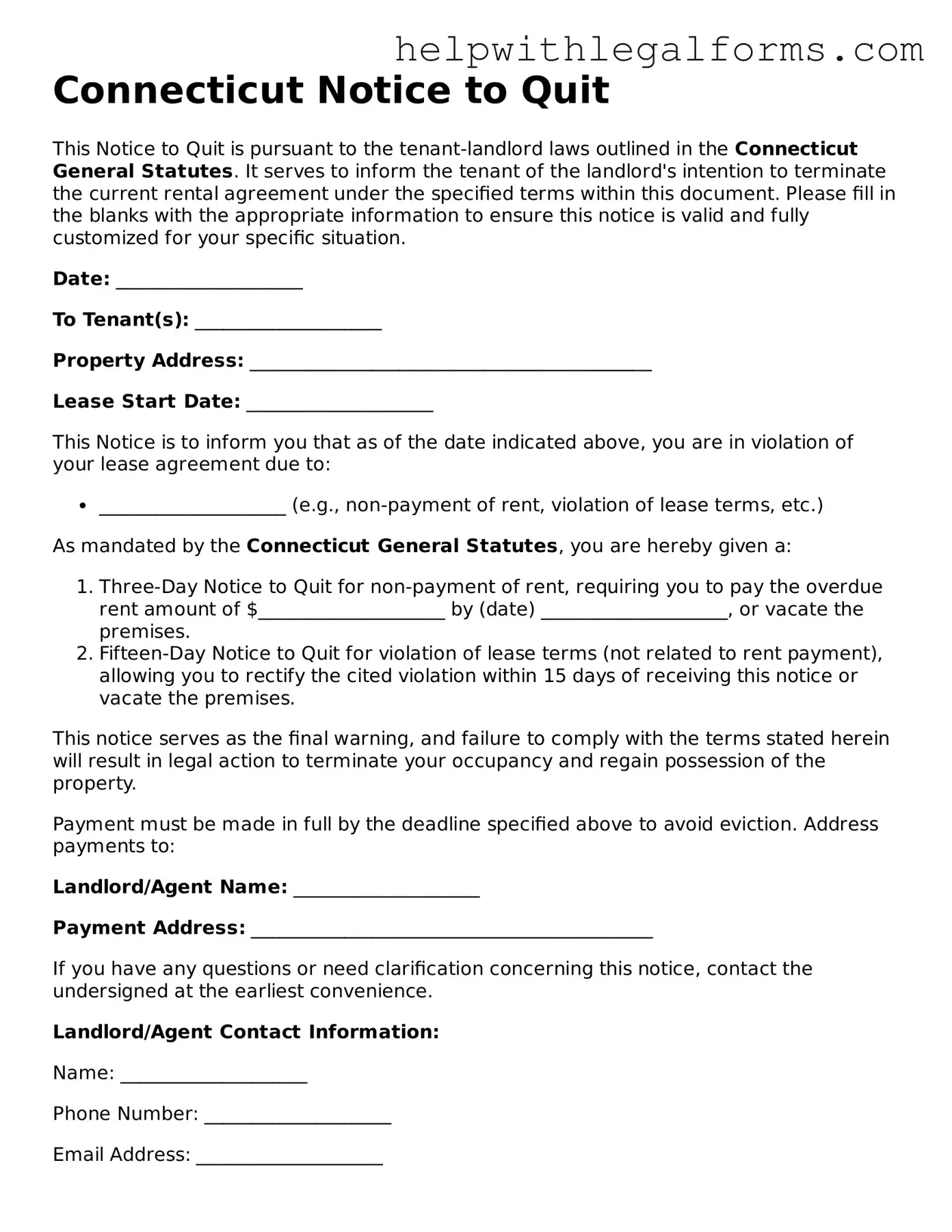Connecticut Notice to Quit
This Notice to Quit is pursuant to the tenant-landlord laws outlined in the Connecticut General Statutes. It serves to inform the tenant of the landlord's intention to terminate the current rental agreement under the specified terms within this document. Please fill in the blanks with the appropriate information to ensure this notice is valid and fully customized for your specific situation.
Date: ____________________
To Tenant(s): ____________________
Property Address: ___________________________________________
Lease Start Date: ____________________
This Notice is to inform you that as of the date indicated above, you are in violation of your lease agreement due to:
- ____________________ (e.g., non-payment of rent, violation of lease terms, etc.)
As mandated by the Connecticut General Statutes, you are hereby given a:
- Three-Day Notice to Quit for non-payment of rent, requiring you to pay the overdue rent amount of $____________________ by (date) ____________________, or vacate the premises.
- Fifteen-Day Notice to Quit for violation of lease terms (not related to rent payment), allowing you to rectify the cited violation within 15 days of receiving this notice or vacate the premises.
This notice serves as the final warning, and failure to comply with the terms stated herein will result in legal action to terminate your occupancy and regain possession of the property.
Payment must be made in full by the deadline specified above to avoid eviction. Address payments to:
Landlord/Agent Name: ____________________
Payment Address: ___________________________________________
If you have any questions or need clarification concerning this notice, contact the undersigned at the earliest convenience.
Landlord/Agent Contact Information:
Name: ____________________
Phone Number: ____________________
Email Address: ____________________
This Notice to Quit is issued under the strict guidelines of Connecticut state laws and serves as a legal document that may be used in court if necessary. Compliance with this notice is strongly urged to avoid further legal actions.
Sincerely,
________________________________
Signature of Landlord/Agent
